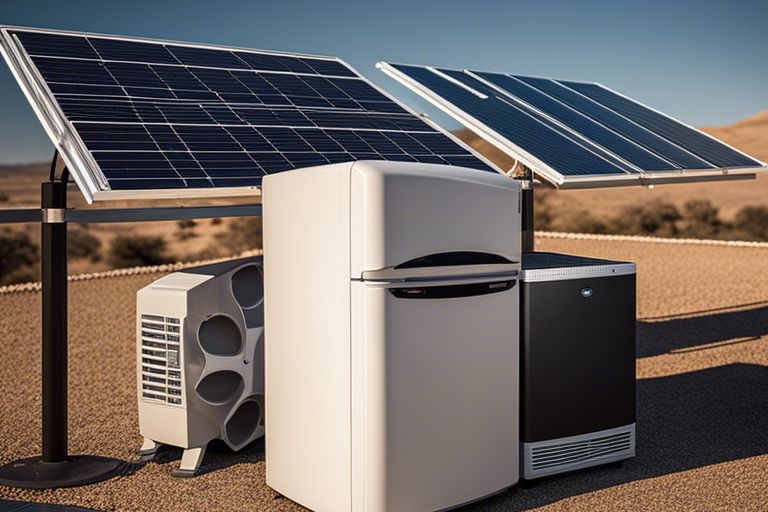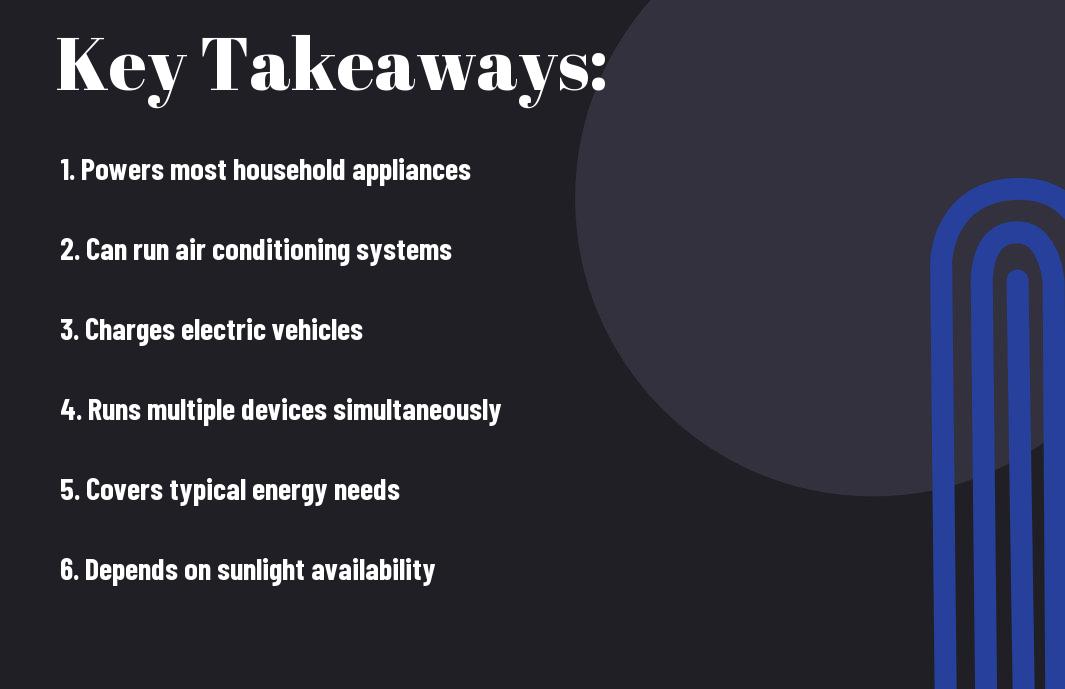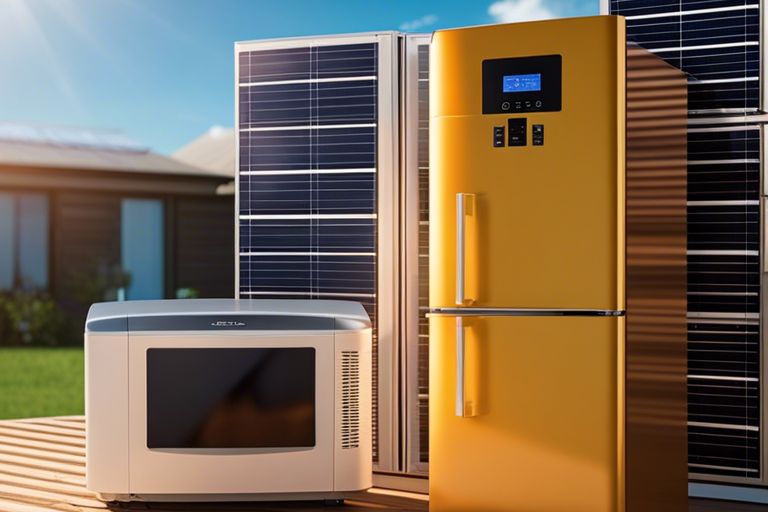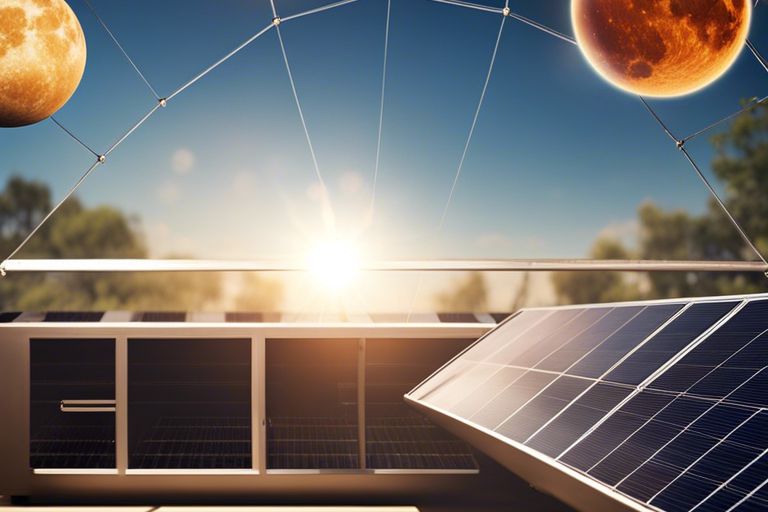Just imagine the possibilities with a 5000 watt solar system at your disposal. From running necessary appliances like refrigerators, lights, and fans to powering up your entire home including energy-intensive items like air conditioners and washing machines, the options are vast. In this blog post, you’ll learn about the various appliances and devices you can confidently power up with a 5000 watt solar system, making your home more sustainable and efficient.

Key Takeaways:
- Ability to power a wide range of household appliances: A 5000 watt solar system is capable of running important appliances like refrigerators, air conditioners, lights, computers, and TVs.
- Not suitable for high-energy consumption devices: While it can handle normal household usage, a 5000 watt solar system may struggle to power high-energy consumption devices such as electric water heaters or ovens.
- Can potentially offset a significant portion of electricity bills: With proper sizing and energy management, a 5000 watt solar system can help reduce or even eliminate electricity bills, depending on the household’s energy usage.
- Size of the system matters: The number of panels and overall system size will determine the power output and what can be run simultaneously. Additional energy storage, like batteries, may be needed for consistent power supply.
- Consider energy-efficient appliances: Investing in energy-efficient appliances can help maximize the benefits of a 5000 watt solar system by reducing overall energy consumption and increasing the number of devices that can be powered.
Solar System Basics
What is a 5000 watt solar system?
While you may hear the term “5000 watt solar system,” what this actually refers to is the capacity of the solar power system to generate electricity. A 5000 watt solar system, also known as a 5kW system, can produce up to 5 kilowatts of power under optimal conditions. This system size is common for residential properties and can offset a significant portion of your electricity needs.
How does a solar system work?
To understand how a solar system works, it’s important to know the basic components: solar panels, inverters, and a racking system to mount the panels. When sunlight hits the solar panels, they generate direct current (DC) electricity. The inverters then convert this DC electricity into alternating current (AC) electricity, which is compatible with your home’s electrical system.
With a net metering system, any excess electricity your solar system generates can be sent back to the grid, allowing you to earn credits on your utility bill. This allows you to further maximize the benefits of your solar system and potentially save even more money on electricity costs.

Energy Requirements
Calculating your energy needs
One of the first steps in determining what a 5000 watt solar system can run is to calculate your energy needs. Start by looking at your recent electricity bills to understand how many kilowatt-hours (kWh) you use on average each month. This will give you an idea of your daily energy consumption, which can help you size a solar system accordingly.
Factors affecting energy consumption
A 5000 watt solar system can power a variety of household appliances and electronics, but the specific items will depend on how much energy each consumes. Some factors that can affect your energy consumption include the size and efficiency of your appliances, how often you use them, and whether you have energy-saving measures in place. Any energy-efficient upgrades you make can help reduce your overall energy needs.
- Insulation levels in your home
- Climate and weather conditions
A thorough assessment of your energy needs is crucial for determining what a 5000 watt solar system can run effectively. By considering factors such as the types of appliances you use, how often you use them, and any energy-saving practices you implement, you can optimize the use of your solar energy system and potentially save on utility costs in the long run.
- Number of occupants in your home
- Usage patterns throughout the day
Running Appliances and Devices
After learning about the benefits of a 5000 Watts (5KW) Solar Grid-Tied Solar Power System, you may wonder what appliances and devices you can run with this setup. Let’s explore the possibilities based on the wattage provided by a 5000 watt solar system.
Small appliances: lights, TVs, and computers
Running small appliances like lights, TVs, and computers is effortless with a 5000 watt solar system. These devices typically consume lower amounts of power, allowing you to power multiple appliances simultaneously without any concerns. You can enjoy uninterrupted functionality of necessary electronics in your home with the consistent power supply from your solar system.
Medium appliances: refrigerators, washing machines, and dryers
Appliances like refrigerators, washing machines, and dryers require moderate amounts of power to operate efficiently. With a 5000 watt solar system, you can confidently run these medium-sized appliances without any performance issues. This means you can keep your food fresh, do your laundry, and dry your clothes using solar power, contributing to energy savings and sustainability.
For more significant machines like washing machines and dryers, it’s necessary to monitor their energy usage to ensure that you are optimizing the power from your solar system effectively.
Large appliances: air conditioners, electric water heaters, and pumps
Water heaters, air conditioners, and pumps are examples of larger appliances that consume higher amounts of power. With a 5000 watt solar system, you can power these appliances, but you may need to manage their usage to avoid overloading the system. It’s crucial to balance the energy requirements of these appliances with other devices in your home to maximize the efficiency of your solar power setup.
Electric water heaters and air conditioners, in particular, can be power-hungry, so using them efficiently and considering alternative energy sources during peak usage times can help you make the most of your solar system.
Powering Your Home
Whole-house systems: running your entire home
For a 5000 watt solar system, you have the capacity to power your entire home efficiently. This system can run necessary appliances such as refrigerators, lights, fans, and even some smaller air conditioning units. With proper energy management and conservation practices, you can enjoy a comfortable home while reducing your carbon footprint.
Partial systems: supplementing your energy needs
Running a 5000 watt solar system can supplement your energy needs by powering specific areas of your home or specific appliances. You can prioritize the most important areas, such as the kitchen or home office, to ensure they are always powered by clean, renewable energy. Additionally, you can choose to run high-energy-consuming appliances during peak sunlight hours to maximize the system’s efficiency.
Your 5000 watt solar system can also be used to charge backup batteries, which can store excess energy generated during the day for use during nighttime or cloudy days. This ensures a consistent power supply and further reduces your reliance on the grid.

System Components
Once again, let’s break down the key components of a 5000 watt solar system that will power your home efficiently and sustainably. This section will focus on the crucial elements that make up a solar system, including solar panels, inverters, and charge controllers.
Solar panels: types and efficiency
Solar panels are the heart of your solar system. They come in various types and efficiency ratings, determining how much sunlight they can convert into electricity. Some common types include monocrystalline and polycrystalline panels, each with its own advantages and drawbacks. Monocrystalline panels are known for their higher efficiency and sleek black appearance, while polycrystalline panels are more cost-effective but slightly less efficient.
- Solar panels have varying efficiency ratings depending on the technology used.
- Monocrystalline panels are more efficient but come at a higher cost.
- Polycrystalline panels are more affordable but slightly less efficient.
- Thin-film panels are flexible and can be used in unique installations.
- After evaluating your energy needs and budget, you can choose the best solar panels for your 5000 watt system.
Inverters: converting DC to AC power
One critical component of your solar system is the inverter, which converts the direct current (DC) generated by the solar panels into alternating current (AC) used to power your home. There are different types of inverters available, including string inverters, microinverters, and power optimizers. Each type has its own advantages and is suited for specific solar panel configurations.
With a 5000 watt solar system, you will likely need a larger inverter to handle the higher power output efficiently. It’s vital to choose an inverter that matches your system size and is compatible with your solar panels. Additionally, monitoring capabilities and warranty are crucial factors to consider when selecting an inverter for your solar system.
Charge controllers: regulating battery charging
To ensure that your solar system operates effectively and your batteries remain healthy, you need a charge controller. Charge controllers regulate the flow of electricity from the solar panels to the batteries, preventing overcharging and prolonging the battery’s lifespan. There are two main types of charge controllers: PWM (Pulse Width Modulation) and MPPT (Maximum Power Point Tracking).
When choosing a charge controller for your 5000 watt solar system, consider the type and capacity of your batteries, as well as the expected solar panel output. MPPT charge controllers are more efficient and can boost the overall output of your system, making them a popular choice for larger solar installations.
regulating the flow of electricity to your batteries efficiently, charge controllers play a crucial role in maintaining the performance and longevity of your solar system. It’s vital to choose the right charge controller based on your system size, battery type, and expected solar panel output.
Installation and Maintenance
Professional installation: hiring a contractor
Not everyone has the necessary skills or experience to install a solar system on their own. Hiring a professional contractor can save you time and ensure that the installation is done correctly. They will have the expertise to determine the best placement for the panels, handle all the wiring and connections, and ensure that everything is up to code. Any reputable contractor will also provide you with guidance on how to maintain your system and troubleshoot any issues that may arise.
DIY installation: doing it yourself
Installation of a solar system can be a challenging task, but if you’re up for the challenge and have some basic knowledge of electrical work, you may consider taking on the project yourself. Keep in mind that this route may save you money, but it will require a significant time investment and careful attention to detail. This option is not recommended for those without prior experience or who are not comfortable working with electricity.
This is a project that requires precision and safety precautions, so make sure you thoroughly research and understand the process before starting. Take your time to plan out the installation and double-check all connections to ensure everything is done correctly.
Regular maintenance: ensuring optimal performance
To keep your 5000 watt solar system running efficiently, regular maintenance is important. This includes cleaning the panels regularly to remove any dirt or debris that could be blocking sunlight. You should also inspect the wiring and connections for any signs of wear or damage.
The inverters and batteries should also be checked periodically to ensure they are functioning correctly. Keeping a log of your system’s performance can help you spot any issues early on and address them before they impact the system’s efficiency.
Conclusion
With these considerations in mind, you now have a better understanding of what a 5000 watt solar system can run in your home. From powering crucial appliances like refrigerators, lights, and laptops to potentially even running larger items like air conditioners or electric stoves, a 5000 watt solar system can provide significant energy savings and reduce your reliance on the grid.
By investing in a 5000 watt solar system, you not only have the opportunity to save money on your energy bills but also reduce your carbon footprint and contribute to a more sustainable future. With the right planning and setup, you can enjoy the benefits of solar power while powering your home with clean, renewable energy. So, consider the possibilities and see how a 5000 watt solar system can work for you!
Q: What appliances can a 5000 watt solar system run?
A: A 5000 watt solar system can typically run a variety of appliances, including refrigerators, lights, fans, computers, TVs, washing machines, and power tools. It can also support smaller appliances like smartphones, tablets, and kitchen appliances.
Q: How many solar panels are needed for a 5000 watt solar system?
A: The number of solar panels needed for a 5000 watt solar system depends on the efficiency of the panels and the amount of sunlight available. On average, you would need around 15-20 solar panels with a capacity of 300-350 watts each to generate 5000 watts of power.
Q: Can a 5000 watt solar system power an entire house?
A: A 5000 watt solar system can power a medium-sized house with basic energy needs. However, it may not be enough to power larger homes with high energy consumption. To determine if a 5000 watt solar system can power your entire house, you should consider your electricity usage, the efficiency of your appliances, and any energy-saving measures you can implement.
